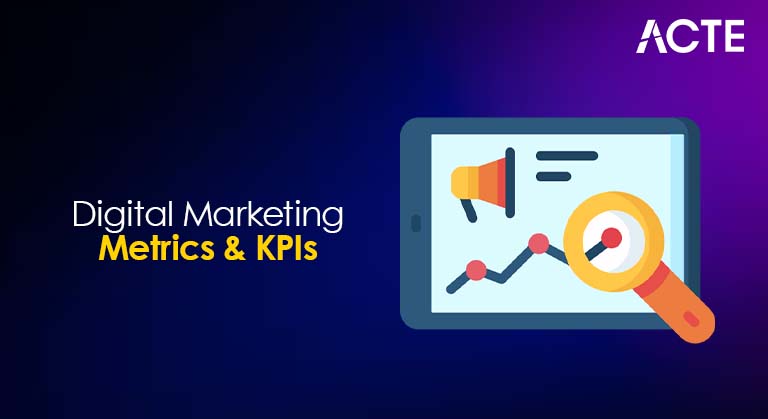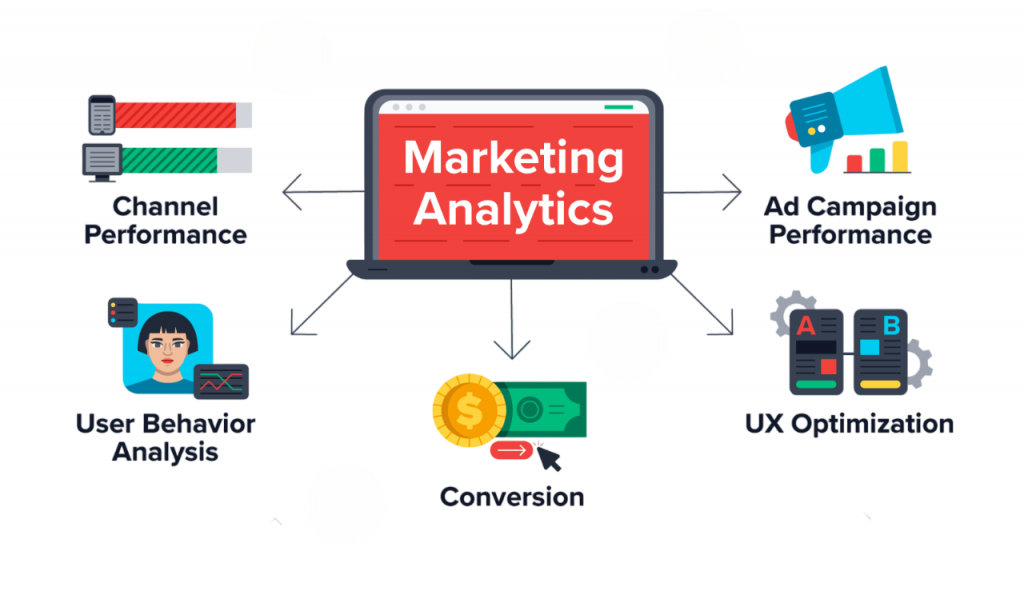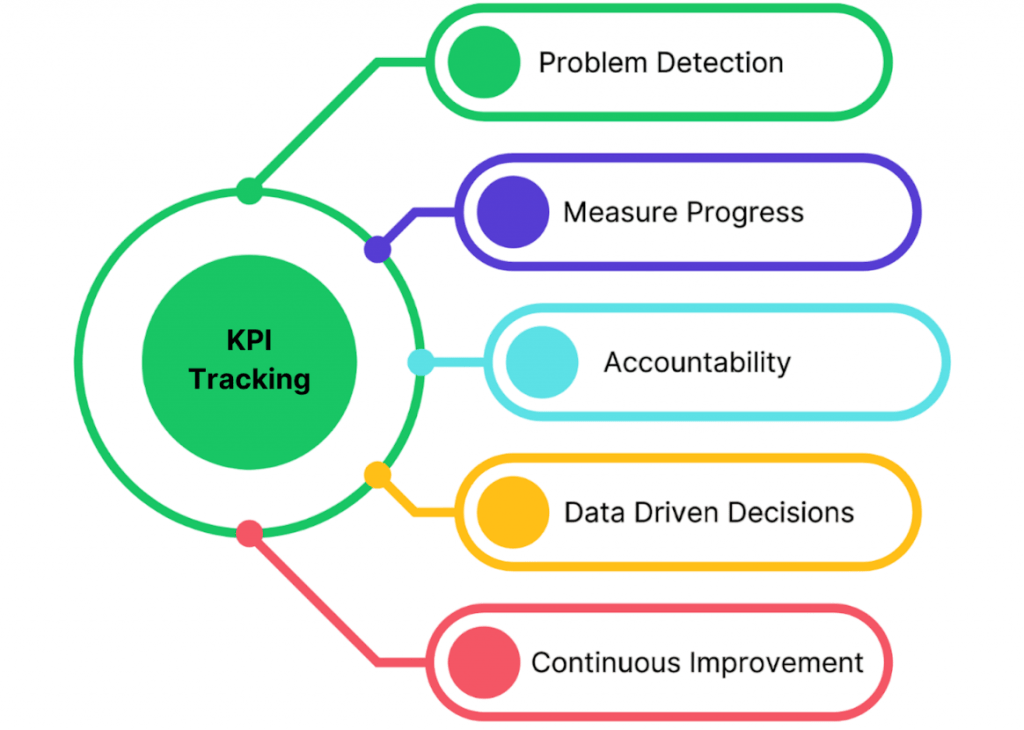
- Digital Marketing Metrics
- Why Metrics Matter in Digital Marketing
- Categories of Digital Marketing Metrics
- Key Metrics You Should Track
- How to Analyze and Interpret Metrics
- Tools for Tracking Digital Marketing Metrics
- Setting Goals and KPIs
- Common Mistakes in Metric Tracking
- The Future of Marketing Analytics
- Conclusion
Digital Marketing Metrics
In the digital age, marketing is no longer about guessing what works. Instead, it focuses on measuring and checking performance to make informed decisions. Digital marketing metrics are data points that help marketers evaluate the success of their campaigns and strategies analytical foundations built in Digital Marketing Training, where learners interpret performance indicators, align metrics with business goals, and apply data-driven insights to optimize marketing outcomes across channels. Whether you run a content marketing campaign, a paid advertising strategy, or an email marketing sequence, metrics give you the visibility needed to understand what works and what doesn’t. By closely monitoring key performance indicators (KPIs) like click-through rates, conversion rates, and customer engagement levels, marketers can gain useful insights into their audience’s behavior and preferences.
Ready to Get Certified in Digital Marketing? Explore the Program Now Digital Marketing Online Training Offered By ACTE Right Now!
Why Metrics Matter in Digital Marketing
Metrics are the backbone of modern marketing strategies. They help professionals make decisions based on data and gain insights into how campaigns are performing. By carefully tracking and examining key indicators, marketers can find high-performing channels, understand customer behaviors, and justify spending on marketing to stakeholders.

These measurements give a clear view of return on investment (ROI) and help teams constantly improve future marketing efforts performance insights explored in What is Display Advertising, where marketers learn to track ROI across ad formats, optimize campaign spend, and apply data-driven strategies to refine display advertising outcomes over time. Without good metrics, marketing activities lack direction. This weakens strategic planning and resource allocation. In the end, tracking metrics turns raw data into useful information. This drives business profitability and ensures that every marketing dollar is used effectively for the greatest impact.
Categories of Digital Marketing Metrics
There are many types of digital marketing metrics, each tied to a specific channel or goal. Understanding how they relate helps build a comprehensive performance overview an approach emphasized in Email Marketing Strategy, where learners explore how open rates, click-through rates, conversion metrics, and A/B testing results contribute to campaign optimization. By aligning metrics with strategic objectives, marketers can refine targeting, improve engagement, and maximize ROI across email-driven initiatives.
Website Metrics
- Sessions and pageviews
- Bounce rate
- Average session duration
- Pages per session
- New vs. returning visitors
SEO Metrics
These metrics track your visibility in search engines:
- Organic traffic
- Keyword rankings
- Click-through rate (CTR) from search
- Domain authority
- Backlinks
- Impressions and search visibility
Paid Advertising Metrics
Used in platforms like Google Ads, Meta Ads, and others:
- Cost-per-click (CPC)
- Click-through rate (CTR)
- Quality Score (Google Ads)
- Ad impressions
- Cost-per-acquisition (CPA)
- Return on ad spend (ROAS)
Social Media Metrics
Used to evaluate performance across platforms like Instagram, Facebook, LinkedIn, and Twitter:
- Engagement rate
- Likes, comments, shares
- Follower growth
- Reach and impressions
- Social CTR
- Video views and watch time
Email Marketing Metrics
Used to track email campaign effectiveness:
- Open rate
- Click-through rate (CTR)
- Bounce rate
- Unsubscribe rate
- List growth
- Conversion rate from email
Conversion Metrics
These track how effectively your digital efforts are converting traffic into leads or customers:
- Conversion rate
- Goal completions (form fills, downloads)
- Revenue per visitor
- Abandonment rate (cart or form)
Customer Engagement & Retention Metrics
These long-term metrics help measure how customers engage with your brand post-conversion:
- Customer lifetime value (CLTV)
- Retention rate
- Churn rate
- Net promoter score (NPS)
- Repeat purchase rate
- Organic search.
- Direct traffic.
- Paid search.
- Social media.
- Referral traffic.
- Email marketing.
- Click-Through Rate (CTR): CTR is calculated by dividing the number of clicks by the number of impressions. It’s a strong indicator of the effectiveness of your headlines, ad copy, or call-to-action.
- Bounce Rate: Bounce rate shows the percentage of visitors who leave your site after viewing only one page. High bounce rates often indicate problems with content relevance, page speed, or user experience.
- Conversion Rate: Conversion rate tracks how many users complete a desired action, such as a purchase or sign-up. This is a core metric for measuring campaign success.
- Cost Per Acquisition (CPA): CPA measures the average cost of acquiring one customer. It’s a vital metric for paid media campaigns, allowing you to understand profitability.
- Return on Ad Spend (ROAS): ROAS = Revenue generated from ads / Cost of ads. This metric helps evaluate the efficiency of paid advertising campaigns.
- Customer Lifetime Value (CLTV): CLTV predicts how much revenue you can expect from a single customer over their entire relationship with your brand. When compared to acquisition costs, it helps assess long-term business sustainability.
- Specific: Focus on one clear outcome.
- Measurable: Track progress with data.
- Achievable: Realistic based on your resources.
- Relevant: Tied to business objectives.
- Time-bound: With a defined deadline.
- Increase organic traffic by 25% in 6 months
- Achieve a 3% email conversion rate by Q3
- Reduce customer acquisition cost (CAC) by 15% quarter-over-quarter
- Focusing on vanity metrics (likes, impressions) without tying them to outcomes
- Measuring too many metrics at once without prioritization
- Ignoring attribution (e.g., giving all credit to the last touchpoint)
- Not considering data sampling or tracking errors
- Failing to compare against historical data or benchmarks
- AI-powered analytics: Automating insights and pattern recognition.
- Predictive metrics: Using past behavior to forecast future outcomes.
- First-party data focus: With privacy regulations tightening, businesses will rely more on data they collect directly.
- Real-time reporting: Faster, dynamic dashboards for agile marketing.
- Cross-channel attribution modeling: Better understanding of multi-touch journeys.
To Explore Digital Marketing in Depth, Check Out Our Comprehensive Digital Marketing Online Training To Gain Insights From Our Experts!
Key Metrics You Should Track
Traffic Sources Understanding where your traffic comes from helps identify which channels are most effective. Common sources include:
How to Analyze and Interpret Metrics
Interpreting metrics effectively requires a careful approach that goes beyond simply watching numbers. Successful data analysis means evaluating performance thoroughly across different dimensions. This includes comparing results over time, across various channels, and against set goals or industry standards benchmarking techniques developed through Digital Marketing Training, where learners analyze cross-channel performance, align KPIs with strategic objectives, and evaluate outcomes against industry benchmarks to drive continuous improvement and competitive advantage. By breaking down data by audience type, source, or device, analysts can discover deeper insights and clear patterns. This detailed interpretation also requires looking for important connections between metrics. For example, understanding how a high bounce rate relates to low conversion rates is essential. Using clear dashboards to visualize data helps turn complex information into useful intelligence. Context is crucial in interpreting metrics. For instance, a 70% bounce rate might be acceptable for a blog but could indicate serious issues on a product page. This complete approach allows organizations to use data as a strong tool for making strategic decisions, helping them gain real, valuable insights from their performance metrics.
Looking to Digital Marketing Training? Discover the Digital Marketing Expert Masters Program Training Course Available at ACTE Now!
Tools for Tracking Digital Marketing Metrics
In today’s digital marketing world, professionals have access to many performance tracking tools that provide analytics across various platforms. Google Analytics 4 (GA4) delivers basic web analytics. Complementary platforms like Google Search Console give important SEO performance insights. Marketers can use specialized tools such as Google Ads and Meta Ads Manager for paid advertising analytics, and platforms like SEMrush, Ahrefs, and Moz for SEO and backlink tracking an integrated toolkit explored in How to Use Facebook Ads Manager, where learners master campaign setup, audience targeting, and performance analysis across Meta platforms while aligning paid and organic strategies for maximum visibility and ROI. Customer relationship management solutions like HubSpot and Salesforce provide deeper insights into marketing automation, while social media monitoring tools such as Hootsuite and Sprout Social keep track of engagement metrics. Email campaign performance can be easily analyzed with platforms like Mailchimp and Constant Contact. By bringing together data from these different tools into unified dashboards using platforms like Google Data Studio or Looker Studio, marketing professionals can improve visibility, simplify decision-making, and create more targeted, data-driven strategies that lead to meaningful business results.
Setting Goals and KPIs
Every campaign or initiative should begin with clear goals and KPIs (Key Performance Indicators). Your KPIs should be strategically defined in Understanding Conversion Rate Optimization, where marketers learn to set measurable objectives, align performance metrics with business outcomes, and track conversion signals that reveal true campaign effectiveness across channels.

Examples of Good KPIs:
Preparing for Digital Marketing Job Interviews? Have a Look at Our Blog on Digital Marketing Interview Questions and Answers To Ace Your Interview!
Common Mistakes in Metric Tracking
Avoid these pitfalls when working with digital marketing metrics common missteps addressed in How To get more subscribers to YouTube channel, where creators learn to interpret analytics correctly, avoid vanity metrics, and focus on actionable insights that drive subscriber growth, engagement, and long-term channel success.
It’s better to focus on a handful of meaningful metrics than to track everything and understand nothing.
The Future of Marketing Analytics
As digital marketing evolves, so do the tools and techniques for measuring its success. Key future trends include: To complement such forward-looking strategies with visibility fundamentals, exploring SERP in Digital Marketing reveals how Search Engine Results Pages determine online discoverability highlighting the role of organic listings, paid ads, featured snippets, and local packs in driving traffic, engagement, and conversions.
Adapting to these trends will help marketers stay ahead of the competition and continue driving value from their data.
Conclusion
Digital marketing metrics are essential for any successful strategy. They provide insights that help make informed decisions, improve performance, and deliver measurable results. Metrics like traffic sources, conversion rates, customer lifetime value, and ROAS each tell part of the story. The best marketers ask the right questions and know how to interpret the answers, rather than just collecting data critical thinking skills honed in Digital Marketing Training, where learners transform raw metrics into actionable insights, apply diagnostic frameworks, and build data-informed strategies that drive measurable impact. By focusing on important metrics, using the right tools, and regularly examining and adjusting strategies, you can achieve real business growth in today’s competitive digital landscape. In this constantly changing environment, you must stay flexible and responsive, continuously refining your approach based on what these metrics reveal. For example, a high bounce rate may indicate that you need to improve your landing pages, while a rise in customer lifetime value could suggest that you have effective retention strategies in place. Understanding the details behind these numbers enables marketers to adjust their campaigns effectively, ensuring they use resources wisely to maximize impact.




